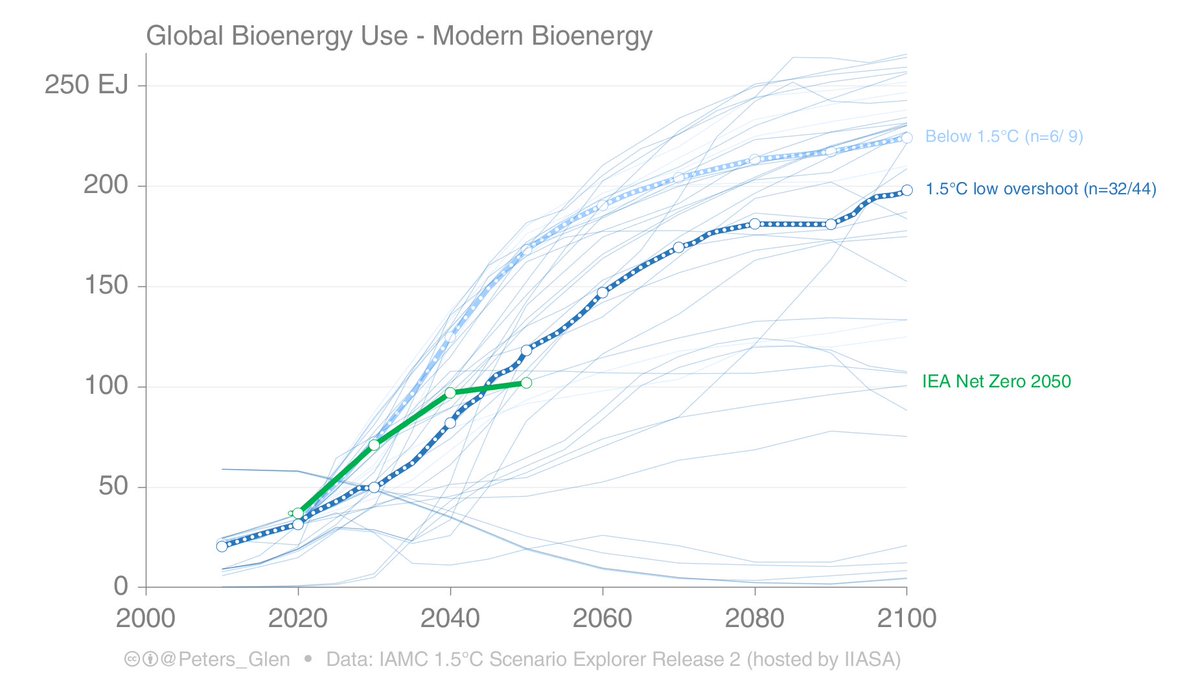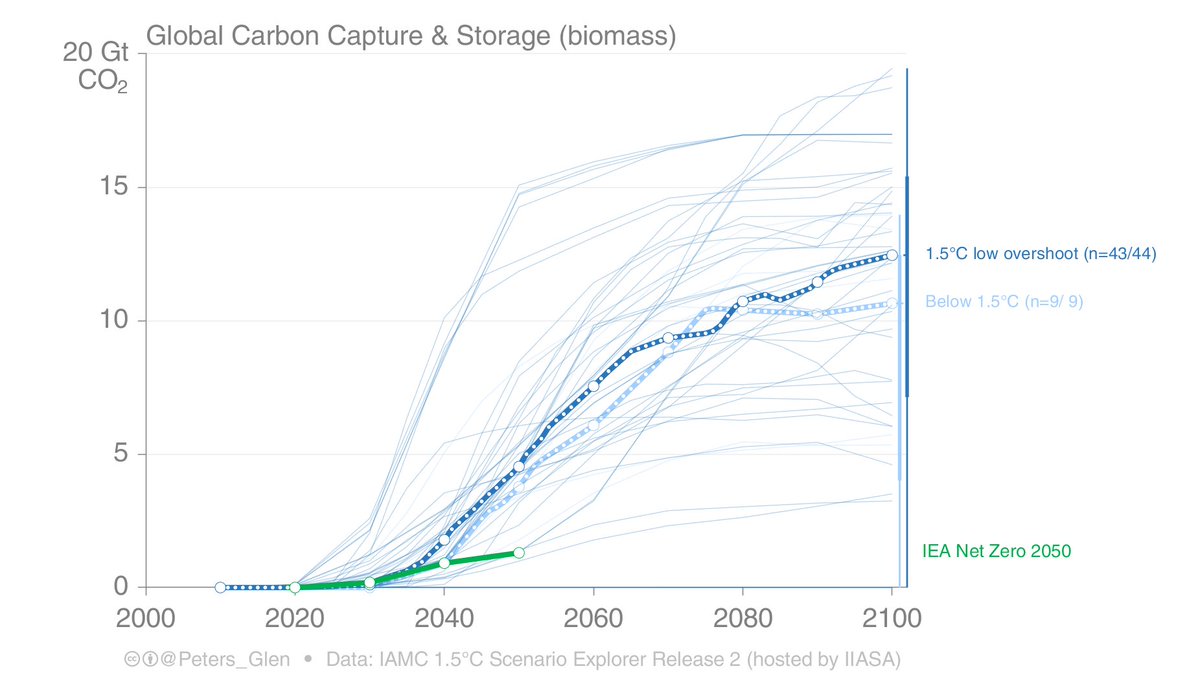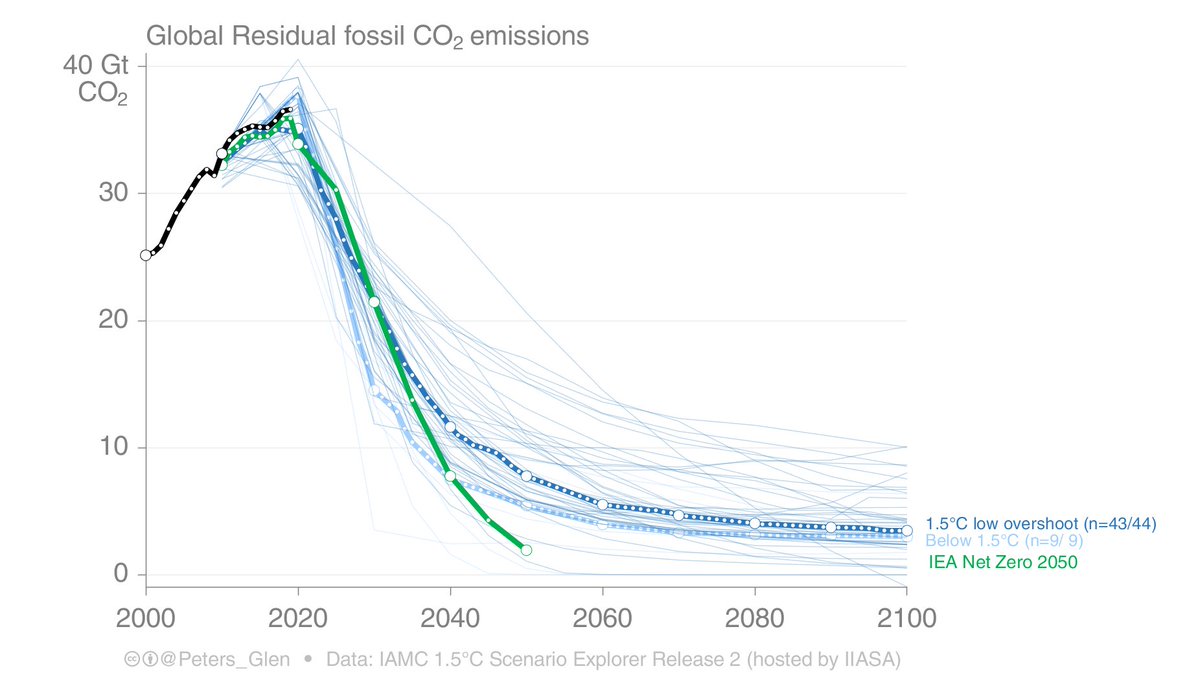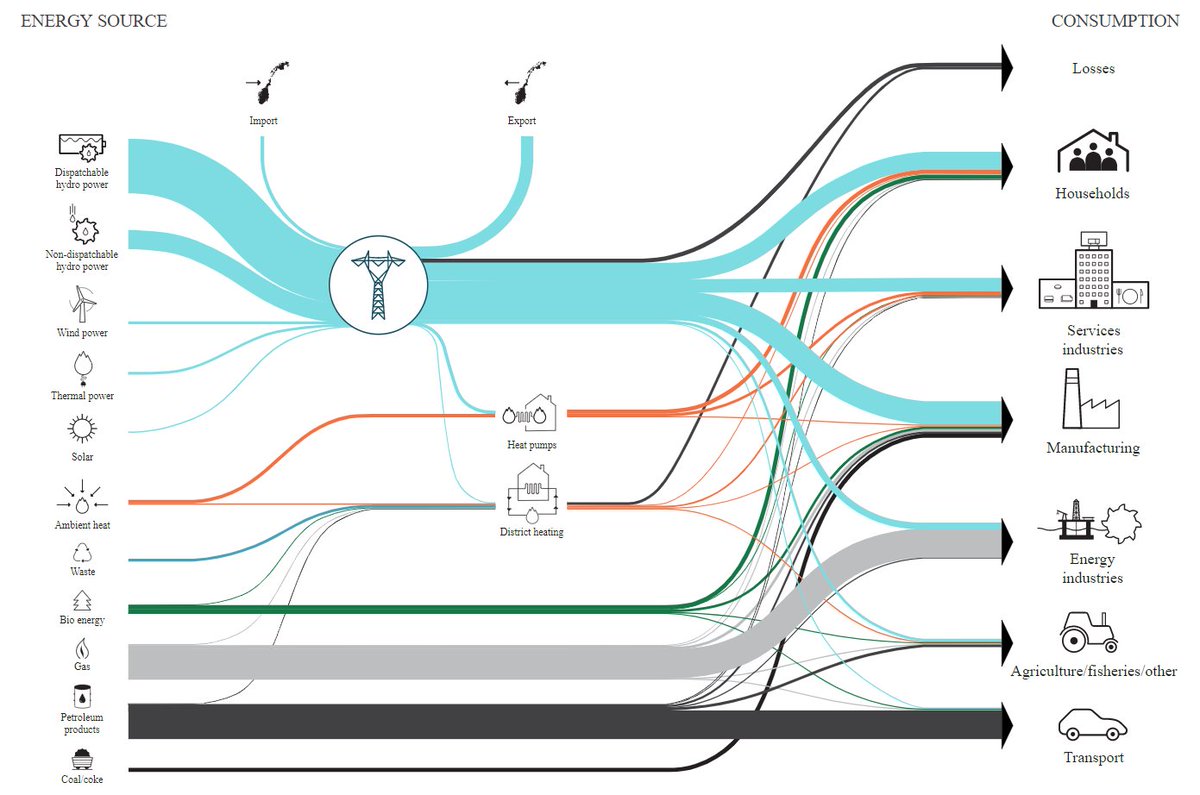
Global CO₂ emissions grew at 2.6%/yr in the 2000s, but this dropped to 1.0%/yr in the 2010s.
Can we see this in the atmosphere?
If emissions growth continued at 2.6%/yr in the 2010s, it would lead to ~0.3ppm difference in 2019, or cumulatively 1.3ppm over the 2010s.
1/
Can we see this in the atmosphere?
If emissions growth continued at 2.6%/yr in the 2010s, it would lead to ~0.3ppm difference in 2019, or cumulatively 1.3ppm over the 2010s.
1/

How did I do this?
1. Assume emissions continued at 2.6%/yr from 2010
2. Get difference with current emissions
3. Multiply by airbourne fraction (AF, estimated 1960-2010, 0.43) to estimate atmospheric increase
4. Convert to ppm (1ppm = 2.124GtC, GtCO2 = 3.664 GtC).
Simple!
2/
1. Assume emissions continued at 2.6%/yr from 2010
2. Get difference with current emissions
3. Multiply by airbourne fraction (AF, estimated 1960-2010, 0.43) to estimate atmospheric increase
4. Convert to ppm (1ppm = 2.124GtC, GtCO2 = 3.664 GtC).
Simple!
2/
We should see this in the atmosphere, but how confidently given variability?
The effective difference in growth rates is ~2%, which we should be able to detect after 5-10 years. Though, note in the commentary, we compared 1% & -1%, not 2.5% & 1%.
rdcu.be/buifD
3/
The effective difference in growth rates is ~2%, which we should be able to detect after 5-10 years. Though, note in the commentary, we compared 1% & -1%, not 2.5% & 1%.
rdcu.be/buifD
3/
This is a part of my new life doing research via Twitter...
Which sees extensive peer review, follow the threads under this tweet.
4/4
https://twitter.com/Peters_Glen/status/1397977309517393929
Which sees extensive peer review, follow the threads under this tweet.
https://twitter.com/Peters_Glen/status/1398182084649361408
4/4
• • •
Missing some Tweet in this thread? You can try to
force a refresh


















